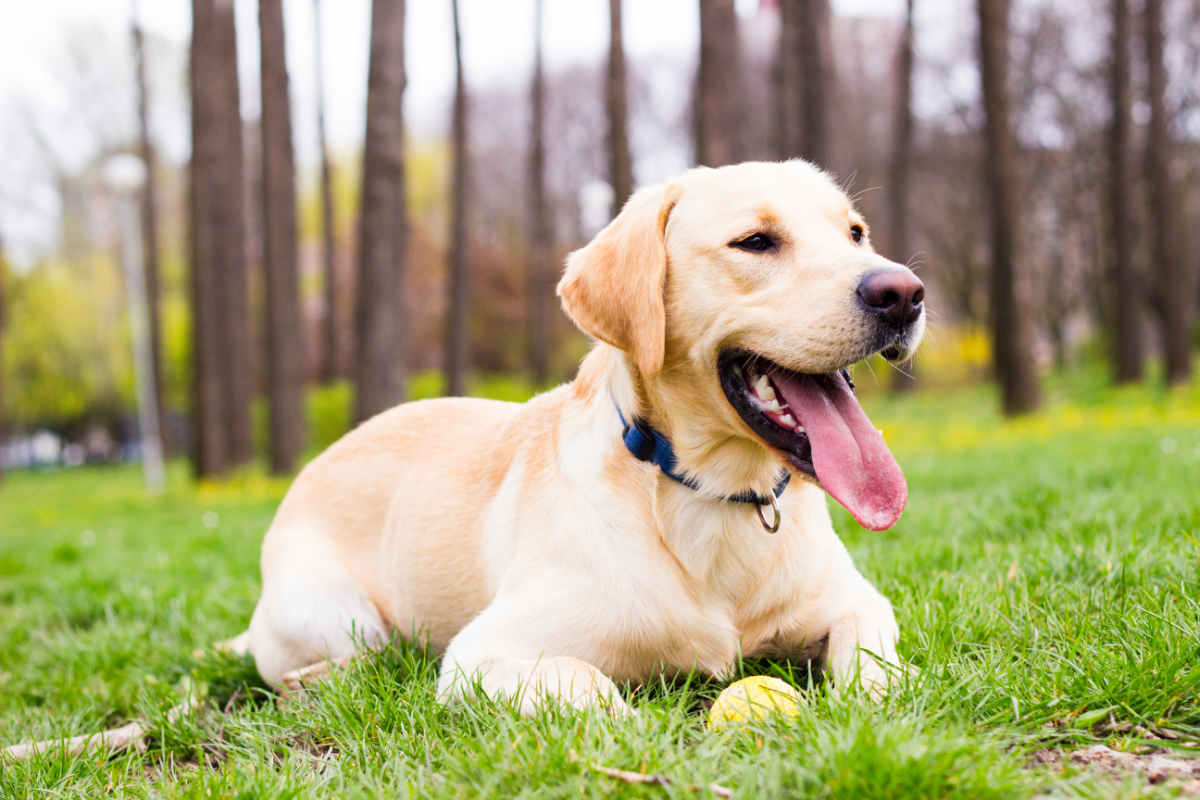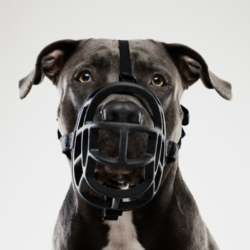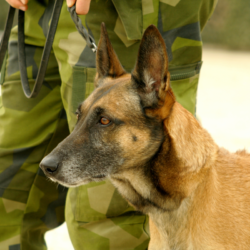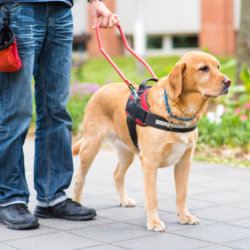Epilepsy in dogs is a complex neurological condition that can be disconcerting for owners. Characterised by sudden and often spectacular seizures, the condition requires careful and rigorous management.
How should you react in the event of a seizure?
If your dog has an epileptic seizure, it’s crucial to stay calm and follow these steps:
- Make sure the environment around the dog is safe by removing any dangerous or sharp objects that could injure it.
- Do not attempt to restrict the animal’s movements or put your fingers in its mouth, as this could result in injury to you or the dog.
- If your vet has supplied you with ampoules of diazepam, give it to your dog intra-rectally in the prescribed dose. Repeat up to a maximum of 3 times, with an interval of 2 minutes between each administration.
- If the seizure lasts longer than 10 minutes, it’s an emergency: consult a vet immediately.
- Make a note of the date and duration of the seizure to inform your vet, as this can help assess the effectiveness of the treatment.
- Once the seizure is over, place your dog in a calm, reassuring environment to help it recover.
Although rare, it is possible for a dog to die as a result of a seizure, especially if it is particularly severe or prolonged. Complications can include hyperthermia, asphyxia, lack of oxygen to the brain, traumatic injuries caused by uncontrollable movements, or cardiac arrhythmias.
Reaction during an epileptic seizure:
- Move away and do not touch the animal.
- Turn off the lights or dim them as much as possible.
- Do not make any noise and turn off nearby sound sources.
- Remove anything that could be dangerous for the animal and, if necessary, place a cushion to separate it from a high-risk area.
- Wait for the seizure to subside before talking to the animal.
What is the usual treatment for epilepsy ?
The aim of anti-epileptic treatment is to enable the animal and its owner to lead as normal a life as possible by controlling the seizures. It is essential to define this notion of control with the owner, explaining that the aim is to manage the seizures rather than cure them. Treatment aims to :
- Increase the interval between seizures;
- Reduce the number and duration of seizures;
- Reduce the intensity of seizures;
- Reduce recovery time after seizures.
Anti-epileptic treatment has two components:
- Reducing trigger stimuli
- Acting on the excitability threshold of neurons
The main drugs used are :
- Phenobarbital: first choice for background treatment, increases the epileptogenic threshold.
- Potassium bromide (KBr): used alone or in combination with phenobarbital, especially for animals with liver dysfunction.
- Imepitoin: well tolerated with fewer side effects.
- Levetiracetam (Keppra®) and Zonisamide (Zonegran®): often used in combination for refractory cases.
- Diazepam: for emergency treatment of acute seizures.
It is vital that the owner understands the importance of regular treatment and keeps a diary of seizures and medication taken. Regular monitoring is necessary to adjust the treatment and check for side effects.
Initiation of treatment depends on the type of dog, the owner’s lifestyle and the frequency and severity of seizures. Treatment is necessary if the dog has presented with status epilepticus, has had at least two seizures within 6 weeks or two or more cluster seizures within 8 weeks. It is crucial to start treatment as early as possible, as epilepsy is an auto-aggravating disease.
How can you help your pet naturally?
In China,acupuncture has been used to treat epilepsy for centuries. This alternative medicine can help control epilepsy, especially as a complement to medical treatment or when the latter fails. Although its results have not been widely studied, acupuncture could improve the quality of life of refractory animals.
In phytotherapy, Griffonia has a beneficial soothing effect on stressed animals. Skullcap and valerian are recognised by British vets for treating epileptic seizures, often in combination with anti-spasmodic treatments. This combination reduces the dose of medication and the associated side effects. Daily administration of skullcap and valerian can space out and reduce epileptic seizures without harmful effects.
- Fig tree: Young fig tree shoot macerate is a powerful emotional regulator, acting on nervous disorders and stress.
- Holly: Young shoots of Holly macerate is effective for restoring spasmodic nervous disorders. It also acts as a hypotensive and febrifuge.
- Juniper: Juniper bud macerate is a nervous system drainer, recommended for anxiety neurosis. It promotes restful sleep.
- Linden: Fresh Linden bud macerate is an excellent nervous system drainer, recommended for anxiety and obsessive neuroses. It also helps to prolong restful sleep.
A specific diet, low in carbohydrates or cereals, can also reduce the frequency of attacks in some dogs.
Focus on CBD
CBD (cannabidiol), extracted from hemp, is an effective natural alternative for calming epileptic seizures and reducing stress. It is increasingly recommended by vets as an alternative to anxiolytics and anticonvulsant drugs.
Studies, such as those carried out by the Flint Animal Cancer Center at the University of Colorado, show that CBD can reduce the severity and frequency of seizures in epileptic dogs. According to this research, 89% of dogs given CBD oil showed a reduction in seizure frequency. Similar studies in Japan confirm these results.
CBD acts on the endocannabinoid system common to dogs, cats and humans, regulating stress and anxiety, which can trigger seizures. By calming the animal, CBD helps prevent stress-induced seizures and improves overall quality of life. Always consult a vet before using natural treatments for canine epilepsy.





